Are you a Quiet Speculation member?
If not, now is a perfect time to join up! Our powerful tools, breaking-news analysis, and exclusive Discord channel will make sure you stay up to date and ahead of the curve.
I get that a "Swan Song" generally refers to "the end of something" or "the finale," but that's not why I picked the art for Swan Song as the thumbnail for this article. I'm not going anywhere (other than Vegas this week), but I really just picked it because Swan Song is another good old "everyone else thinks this is a bulk rare, but I know I can buylist it for a dollar" card. That's a lot of quotation marks for an introduction, so let's "get on with it."
I'm in an interesting spot this week. I mean, by the time you read this on Thursday, I'll be standing behind the Hareruya booth at Grand Prix Las Vegas. If you're reading this on Friday, I might be in the middle of getting married. This is also Announcement Week, where we'll be getting blasted with a new piece of world-shaping Magic news every day starting tomorrow. Normally, I pound out my article Tuesday night or Wednesday morning so that it goes live on Thursday, but I'm writing to you from the past (Sunday) because of how busy I'll be with Vegas prep tomorrow.
Therefore, nothing today will have anything to do with announcement week, nor will I be covering anything that gets announced during announcement week. C'est la vie. Thankfully, most of the time my column is time insensitive. You can look at bulk rares or close-to-bulk rares and the finance strategies about them pretty much whenever; some cards rotate and become bulk, but that's pretty much it.
So let's cover another timeless topic. Today, I want go over over what it means to "ogre" a box, because it's a core concept to know if you're planning on attending this (or any) Grand Prix to sell a large amount of lower valued cards. I also want to go over a few things that people do wrong when trying to ogre.
At its core, to "ogre" a box of cards means to divide cards into different groups that are valued at fixed prices for each group. When at an event, you take your ogred box around to dealers, who will select the cards that they are willing to buy at the prices you have set. It's quick and easy for everyone at the event – it's setting up that takes the time.
Common Mistake: Asking Too Much
One of the mistakes I've seen other people make while ogreing (and one that I used to make myself a few years ago) is trying to convince a vendor to match the highest buylist price you can find on the internet. It's tempting to try and make the argument, "Well, X store can pay this, can you match it?" and that will work in some cases. Maybe you're trying to offload a stack of, well, Swan Songs for fifty cents a piece, and the vendor across the table wants to offer quarters on each. At that point, pulling up Card Kingdom's eighty cent offer makes a more compelling argument to just meet you in the middle at your asking price, because they're probably going to resell for around a dollar anyway.
What you want to avoid is haggling over every single nickel and dime, trying to get 80 percent of retail on the kind of cards we discuss in these articles. Will there be vendors paying 90 percent of retail on Modern staples there? Absolutely. If you ever listen to the Cartel Aristocrats podcast, it's one of the strategies that Edward Nguyen talks about a lot as an employee of Kirwan's Game Store. They're not looking to make an insane percentage margin on staples – they just want to turn over thousands of transactions each week at a smaller margin per card, because those staples are constantly in demand by more competitive players.
However, that tactic doesn't scale down to the lower-valued cards for all stores in all cases. While the ION Core scanner basically said that Heroic Intervention had a spread of negative 100 percent, that's not super realistic. Most stores aren't constantly selling out of this near-bulk rare from Aether Revolt to the point where they have to aggressively target it on a buylist, so you'll just get a head shake instead of a handshake if you throw it in the $1.00 or $1.50 section of your ogre box. If you follow the strategies in this article, you picked the card up for bulk or a quarter. Just throw all of them in the 50-cent section and call it a day.
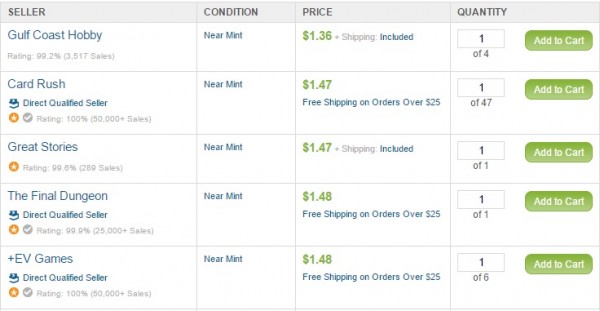
Common Mistake: Spending Too Much Time On This Stuff
If I had to paint a broad stroke and give every card in my ogre box a label (with even more quotation marks), it would be "stuff that I haven't been able to sell at the shop at full retail."
While Deflecting Palm is a hot card to pull out of a stack of bulk rares, there are only so many burn sideboards in the upstate NY area that I can fill up before I start to have excess product that's not moving as quickly as I want it to. This is just stuff I want to make a decent margin on (or cut my losses on) and move on, allowing me to actually enjoy a large percentage of my time at the Grand Prix.
I've seen grinders worry so much about maxing the max amount from their ogre boxes that they only sell a couple dozen cards per vendor, and end up making their rounds through the entire room. I once asked a friend if he wanted to have lunch while at the GP, and he was still ogreing his box four hours later after we had lunch without him. The EV just isn't there.
Common Mistake: Clumsiness
Sometimes you have to make sacrifices while sorting and ogreing cards. This little buddy didn't get to five mana fast enough, and wasn't indestructible when I accidentally ran it over with my chair. He wasn't a bulk rare before, but he's certainly one now. So here's another thing that can technically go wrong while you're at home preparing the ogre boxes, but it's pretty easy to avoid. Just don't be an idiot like I was.
Finished Product
Here's what my complete ogred box looks like:
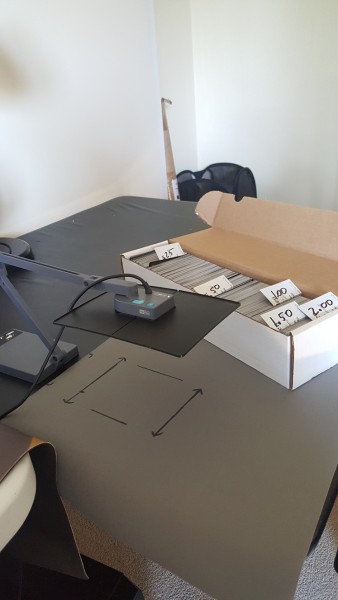
Hopefully you can see how this is so much easier for a vendor on the other side of the table, rather than flipping through binder pages and asking you whether you're okay with prices for each individual card.
Trust me, I've been on the other side of that table, and it can get a bit tedious. It took me around two hours to price sort this entire 1,000-count box with the ION scanner, and that was while rewatching Sherlock on Netflix. With your box ogred, the friendly staff over at Tales of Adventure and MTGDeals can simply do a quick flip through of each pre-priced section and give a quick yes/no on sight, saving you both a huge amount of time.
With some luck, you might even get paid a little bit higher than you otherwise would on certain cards. If we go back to our example with Swan Song, maybe you'll choose to put them in your $1.00 section instead of fifty cents. You'll probably get less bites from vendors overall, but you might find one vendor who thinks "we normally pay $.80 on this, would you take that?", as opposed to theoretically losing money by putting them in the fifty-cent pile.
End Step
Here's some really peasant-tier #mtgfinance advice. If this year's main event(s) are handled similarly to two years ago, all of the swag (playmats, sleeves, deckboxes, promos) will be handed out via BCW 800 count boxes. The same exact box that I pictured earlier in this article.
If you're in the market for extra space to hold your collection, these boxes can get kind of pricey if you don't have access to a distributor. Sometimes they're upwards of 80 cents a piece, even when you buy 300-plus and factor in free shipping. Personally, I'm flying in from upstate NY and won't have the space to leave with a ton of those boxes. If I were driving, though? I saw massive trash bins of empty 1,000-count boxes being wheeled out the door last year, and it kind of made me wish I was more local. That's a lot of free storage space being given away....
Cleanup Step
I'll be at the Hareruya booth on Thursday pretty much all day. Come stop by and say hi! I'll also be giving away Brainstorm Brewery tokens throughout the weekend, along with Jason Alt and Corbin Hosler from the podcast. Hope to see you all there!


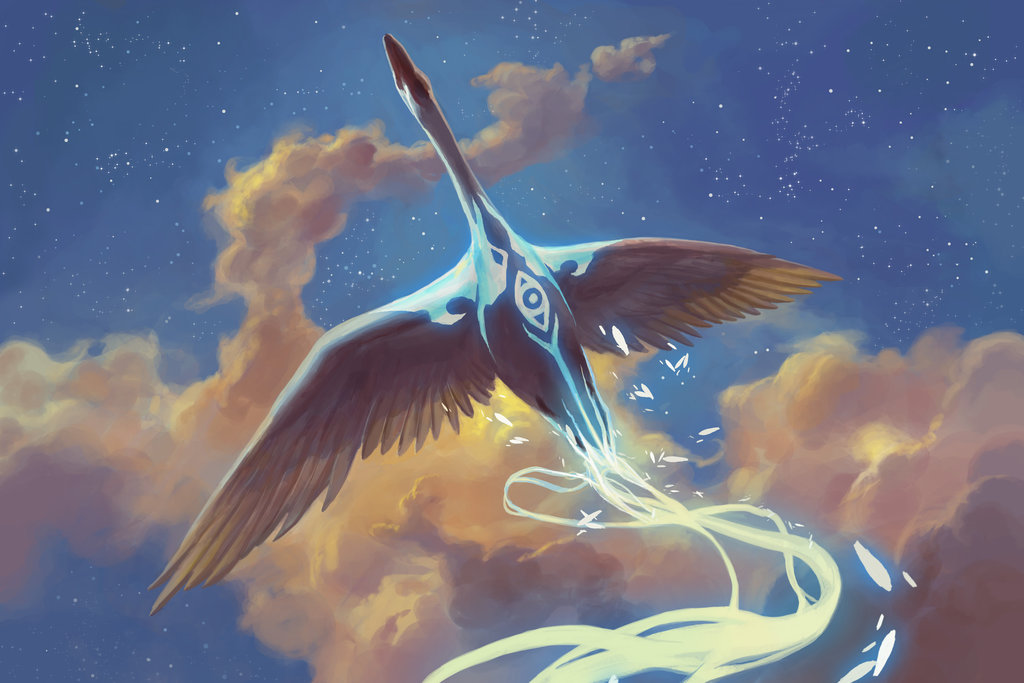
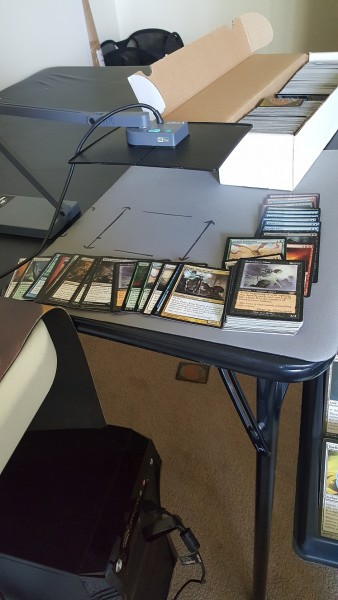
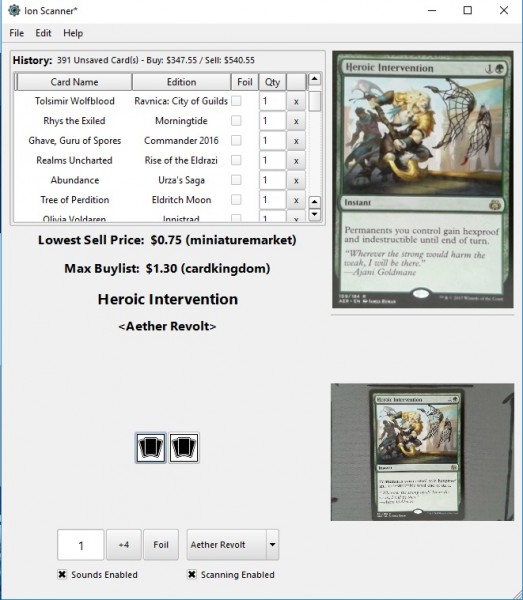
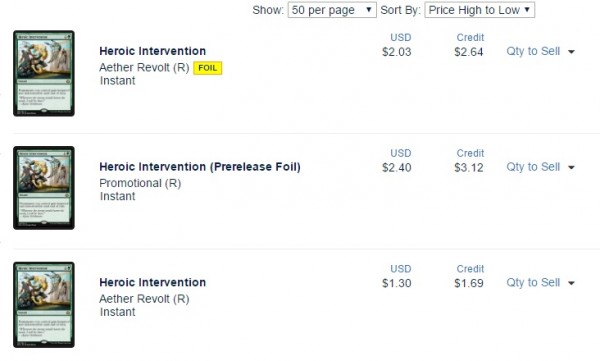
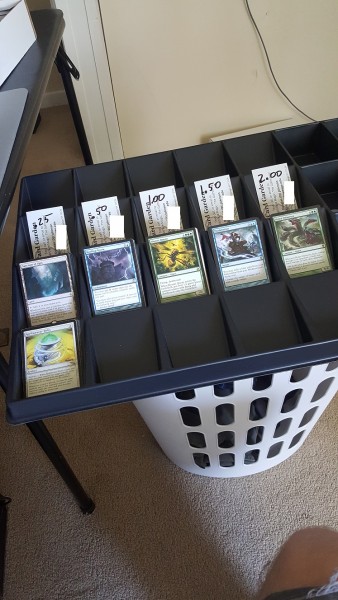
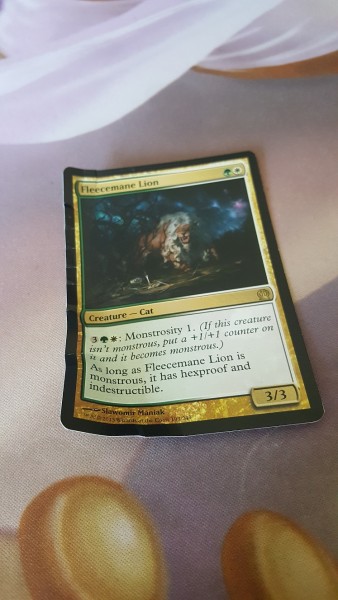



As someone who has had a lot of success with “Ogreing” cards before I definitely agree with everything in your article. One other point you might want to note is on deciding what your price points are. I’ve tried a lot vs a few key ones. While having a lot of different ones (like $0.1, $0.25, $0.3, $0.4, etc.) may seem like you’ll maximize your “value”, by having more typical ones ($0.1, $0.25, $0.5, $0.75, $1, $1.25, etc) you end up with buyers who get a “deal” on some cards they might have bought for say $0.6 and they only pay $0.5 so they are more willing to pay $0.75 on some that they might have typically paid $0.6 on…it sort of balances out in the end and the math and sorting is a lot easier. Just one point I felt could have been included.